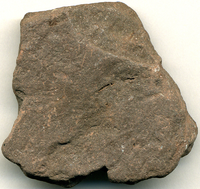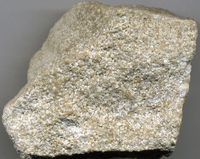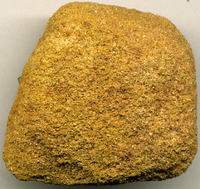Difference between revisions of "Sedimentary"
(→Examples) |
|||
| Line 27: | Line 27: | ||
| style="height:20px; width:200px; text-align:center;" |Sandstone is formed from rounded [[Grain (Rock)|grains]] of sand. | | style="height:20px; width:200px; text-align:center;" |Sandstone is formed from rounded [[Grain (Rock)|grains]] of sand. | ||
|} | |} | ||
| + | |||
| + | ===References=== | ||
| + | ====AQA==== | ||
| + | |||
| + | :[https://www.amazon.co.uk/gp/product/0198359381/ref=as_li_tl?ie=UTF8&camp=1634&creative=6738&creativeASIN=0198359381&linkCode=as2&tag=nrjc-21&linkId=47c8d1ae58d8b3a5e2094cd447154558 ''Sedimentary rock, page 196, GCSE Chemistry; Third Edition, Oxford University Press, AQA ''] | ||
Latest revision as of 18:21, 12 November 2019
Contents
Key Stage 3
Meaning
A sedimentary rock is one made from layers of sediment that have been deposited at the bottom of a river, lake or sea bed.
About Sedimentary Rocks
- Sedimentary rocks are usually soft compared to other rocks.
- They are made of rounded grains held together by mineral salts.
Formation of Sedimentary Rocks
- Weathering - Rocks are broken down by the environment.
- Erosion - Wearing away rocks into smaller pieces.
- Transport - Small pieces of rock are moved by rivers, glaciers and the wind.
- Deposition - When water and the wind slow down or when glaciers melt the small pieces of rock fall to the ground.
- Sedimentation - Layers of sediment (small pieces of rock) build up on lake beds and sea beds.
- Compaction - So many layers build up that the pressure squeezes all the water out.
- Cementation - Mineral salts that were dissolved in the water fall out of solution and bind the sediment together.
Examples
| Mudstone is formed from mud. | Limestone is formed from the shells of dead sea creatures. | Sandstone is formed from rounded grains of sand. |


